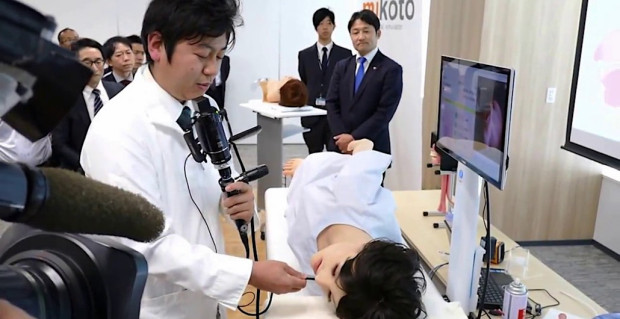Tottori University Hospital (Japan) and the leader of robot development, Tmsuk R & D Inc, worked together on the 3D Printed robot for medical simulations.

Called “Mikoto“, this technological innovation has been developed specifically to help train young doctors, medical students and emergency workers.
The Tmsuk team lays particular emphasis on both the realistic appearance of the robot and its anatomy. Indeed the tongue, the oesophagus and the trachea are all based on the real organs of a patient.
The transformation of the digital images of the patient’s organs into 3D printed models made it possible to get extremely precise components.
Furthermore, the robot “Mikoto” is also constituted with special sensors which allow it to give feedback in the form of “ouch” and gagging in real time to trainees.
Sensors can alert users if they put too much pressure on the robot, or if they stifle it. At the end of the simulation, the 3D print robot also gives a score for the simulation, based on the data obtained through the sensors and the duration of the procedure.
The medical sector is increasingly turning to realistic 3D models to train surgeons and simulate medical procedures.
[Young doctors progressively used the cords by observing senior doctors at work and trying to operate on real patients. Such types of trainings are no longer acceptable. Ensuring patient safety remains a major concern], explains Dr. Toshiya Nakano, neurologist of the Faculty of Medicine at Tottori University.
The new Mikoto robot thus marks a remarkable step forward for medical simulation equipment. However, it is not designed for all kinds of simulations. For the moment, it is only designed for three main procedures: endotracheal intubation (a process wherein a patient’s airway is forced open by a tube in the windpipe), gastrointestinal endoscopy (where internal organs are checked using a flexible fiber-optic camera tube), and sputum suctioning.
//pagead2.googlesyndication.com/pagead/js/adsbygoogle.js
(adsbygoogle = window.adsbygoogle || []).push({});
https://youtu.be/fmzRaccD0xo






